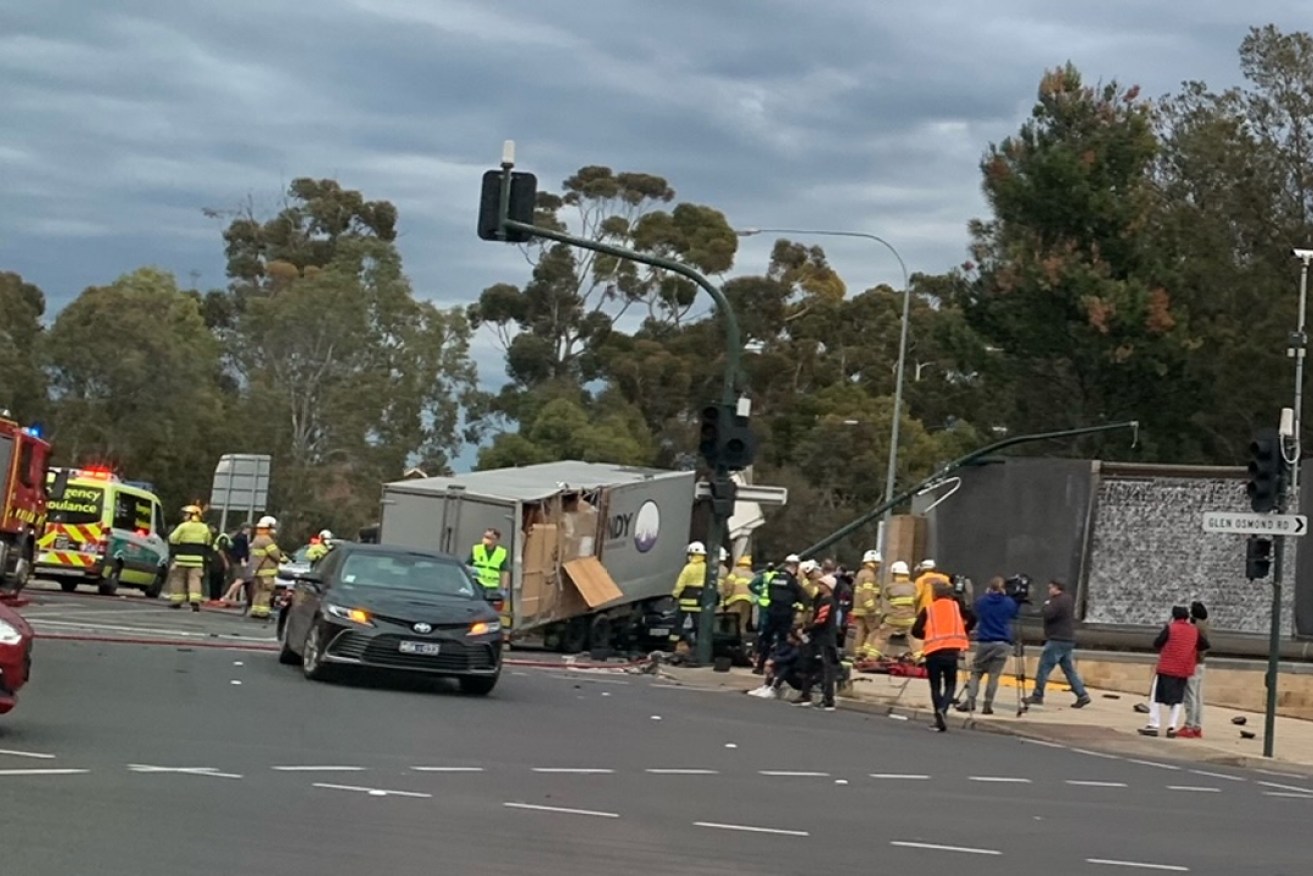Govt considers third freeway arrester bed after latest crash
The state government is investigating whether a third arrester bed should be built on the South East Freeway – years after it was first recommended by the coroner – after yesterday’s truck crash at the bottom of the downtrack sent nine people to hospital.

The scene after a truck hit cars at the SE Freeway bottom in July. Photo: Rebekah Clarkson
A major police investigation is underway to determine the cause of the crash, which happened at 3.45pm Sunday when a truck towing a trailer failed to stop at the Glen Osmond and Portrush roads intersection.
The truck, which was driven by a 60-year-old Queensland man, ploughed through seven cars and a bus.
Nine people were injured, but none had life-threatening injuries – a result police say is miraculous.
Department for Infrastructure and Transport chief executive Jon Whelan told parliament’s Budget and Finance Committee this morning that he was “very grateful that no-one was seriously injured in the crash”.
He said the department was waiting for the outcome of the police investigation so that it could analyse “what actually occurred”.
“What we are aware of is that the truck did come down that hill too fast,” he said.
“It did get into the left lane roughly where you go from the freeway, turned left into Cross Road and it did hit a vehicle in that left lane and then caught the back rear end of a bus and then slid across traffic that was stopped at the Cross Road stop bar.”
The speed limit for all trucks was reduced to 60km/h on the ascent from Crafers after an out-of-control truck smashed into three cars at the intersection, killing two people, in 2014.
There are two arrester beds – one above the Heysen Tunnels and one below – which are designed to stop trucks and other vehicles if their brakes fail.
The Department for Infrastructure and Transport first investigated building a third arrester bed about 10 years ago following a coronial inquiry.
Transport planning and program development executive director Andrew Excell said “lots of work” went into that investigation, including modelling from Queensland University to determine how trucks might enter it.
He said building a third arrester bed would be “challenging”, as there is limited space between the existing arrester beds and the bottom of the freeway.
“There are a lot of operational issues with safety ramps because of the gravel, the kitty litter-style arrangement,” he told the parliamentary committee.
“If it was located in the middle of the road, there are operational issues: how do you control all the stones that get flicked across the road and the length?
“To comply to standards, we need quite a lot of space and length for that.”
Whelan said it was a “very complex and tight section right down the bottom of the freeway”, but the department had committed to investigate whether a third arrester bed could be built.
“I stipulate that a vehicle or a truck driver must have the competence and must be able to use the arrester bed,” he said.
“No matter if a third arrester bed is at the bottom of the freeway, they must be able to use it.”
Premier Peter Malinauskas told reporters this morning that it was important to wait until the police investigation determined the cause of the crash before deciding whether to build a third arrester bed.
“We are certainly open-minded to re-exploring that issue to make sure that the right decisions have been made in the past, but we’re not in any receipt of advice to suggest that’s not the case,” he said.
“We don’t know what failures contributed towards this accident, so the first thing to do is to find this information out.”
Superintendent Bob Gray said there would be an announcement “relatively soon” in relation to the outcome of the police investigation.
He said police were yet to speak to the truck driver, who is still in hospital.
“It is absolutely miraculous that nobody was seriously injured or killed in that collision, particularly if you look at the scene,” he said.
Opposition transport spokesperson Vincent Tarzia said he welcomed the government’s commitment to re-examine a third arrester bed.
“All options must be looked at because it’s clear lives are at risk right now,” he said.




